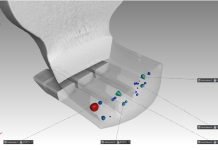Starting from 2040,Schaeffler Group’s environmental footprint will be null. It is a target to be applied to the whole supply chain, strengthened by the ambitious medium-term goals. The internal production will feature zero environmental impact already starting from 2030, with the company’s significant progresses already during the examined period.
Since 2021, for instance, Schaeffler has purchased the whole electricity for its manufacturing sites from renewable sources. «As part of its successful programme for the energy efficiency, starting from 2022 an overall saving of about 47 gigawatts hour will be reached, approximately the equivalent of the yearly energy consumptions of 15,000 families composed by two people in Germany» stated Corinna Schittenhelm, Chief Human Resources Officer.
In this course, highly strategic is the collaboration with the Swedish start-up H2greensteel, which starting from 2025 will supply Schaeffler with the zero-carbon emission steel, due to a yearly hydrogen production of 100,000 tons.
Schaeffler Group is working for innovative solutions to its customers in sectors such as the electric mobility, the production of regenerative energy or the production and use of hydrogen. The commitment addresses also the manufacturing of its products with the lowest possible environmental impact.
Schaeffler Group has improved its EcoVadis sustainability rating reaching 75 points out of 100, gaining also the Platinum status. Furthermore, to enhance its global commitment towards the sustainable development, it goes on joining the ten principles of the United Nations Global Compact.
Schaeffler Group’s sustainability report provides detailed information on focus issues defined by the company in 2020 and on how Schaeffler Group has developed versus important indicators and targets.
However, not only environment: the social responsibility, together with the climatic protection, has the utmost priority for Schaeffler, with unceasing improvements in the field of health and safety: its limestone is the target of reducing the injury rate by about 10% within 2024, goal actually already overcome in 2021 due to the implementation of specific provisions.









